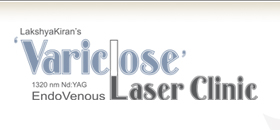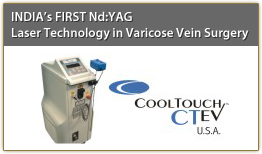|
|
||||||||
 |
 |
 |
||||||
 |
 |
 |
 |
 |
||||
| Post Thrombotic Syndrome |
| What Post Thrombotic Syndrome? |
Post-Thrombotic Syndrome (PTS) is the term used to describe signs and symptoms that may occur as long-term complications of deep vein thrombosis (DVT). It may also be referred to as post-phlebitic syndrome or venous stress disorder. Incidence One out of three patients with DVT develop post thrombotic syndrome (23-60%) and out of these 5-10% ultimately land up with severe PTS and may get venous stasis ulcers in the two years following an episode of DVT. In patients who had a DVT the differentiation between recurrent DVT in one leg and PTS is difficult and in such cases Venous Color Duplex Doppler examination and clinical prediction tools become helpful. Cause Despite ongoing research, the cause of PTS is not entirely clear. Inflammation is thought to play a role as well as damage to the venous valves from the thrombus itself. This valvular incompetence combined with persistent venous obstruction from thrombus increases the pressure in veins and capillaries. Venous hypertension induces a rupture of small superficial veins, subcutaneous hemorrhage and an increase of tissue permeability. That is manifested by pain, swelling, discoloration, and even ulceration. Clinical Presentation Signs and symptoms of PTS in the leg may include:
These signs and symptoms may vary among patients and over time. With PTS, these symptoms typically are worse after walking or standing for long periods of time and improve with resting or elevating the leg. Diagnosis The Villalta scale has become the recommended tool for the diagnosis of PTS. It is a group of objective signs (ranked by severity) and subjective symptoms that clinicians may reliably use to diagnose PTS and its severity. Since signs and symptoms of DVT and PTS may be quite similar, a diagnosis of PTS should be delayed for 3-6 months after DVT diagnosis so that an appropriate diagnosis can be made. Risk Factors Investigators have determined that the following factors increase patients’ risk of developing PTS:
Prevention Prevention of PTS is somewhat controversial and ideally it should begin with prevention of initial as well as recurrent DVT. Treatment Treatment options for PTS include proper leg elevation, compression therapy with elastic stockings or electrostimulation devices, herbal remedies (such as horse chestnut, rutosides, pentoxifylline), and wound care for leg ulcers. Upper-Extremity PTS Patients with upper-extremity DVT may develop upper-extremity PTS, but the incidence is lower than that for lower-extremity PTS (15-25%).There are no established treatment or prevention methods, but patients with upper-extremity PTS may wear a compression sleeve for persistent symptoms. Socioeconomic Impact of PTS PTS lowers patients’ quality of life after DVT, specifically with regards to physical and psychological symptoms and limitations in daily activities. Secondly, the treatment of PTS adds significantly to the cost of treating DVT. The annual health care cost of PTS in the United States has been estimated at $200 million, with costs over $3800 per patient in the first year alone, and increasing with disease severity. PTS also causes lost work productivity: patients with severe PTS and venous ulcers lose up to 2 million work days per year. Areas of Future Research The field of PTS still holds many unanswered questions that are important targets for more research. Those include
|
|
|||||||
 |
|
|||||||||||
|
|
|
|
|
|
|
|
|
|
|
||